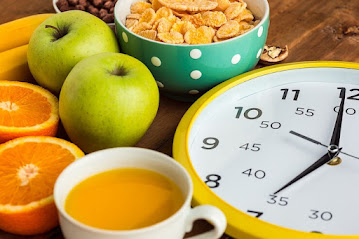Type 2 Diabetes and your body
Understanding how Diabetes affects you:
Taking steps towards managing your Type 2 Diabetes
YOU ARE NOT ALONE. Millions of people of all ages, from all walks of life are living with Type 2 diabetes.
Having Type 2 Diabetes doesn’t have to mean that all the good times are behind you. There are many things you can do today to help you achieve a brighter tomorrow.
This blog post will help you get to know the basics about Diabetes and will help you to gain a better understanding of how your treatment works.
If you have questions, ask your Doctor.
Type 2 Diabetes affects your whole body
Learning the key parts:
· Glucose: When you eat, some of your food is broken down into Glucose (A Type of sugar).This sugar travels through your blood to all of your body’s cells, where it is used for energy.
While sugar gives you the energy you need for healthy living it is vital that it is kept under control and at just the right levels. Some one with Type 2 Diabetes will have trouble doing this.
Having too much sugar in your blood is called Hyperglycaemia while having too little sugar in your blood is called Hypoglycaemia.
· Insulin: A key job for insulin is to make sure your blood sugar levels go down after eating. Insulin lowers the blood sugar by helping to move it from your blood stream into your cells where it is used for energy.
For people with Type 2 Diabetes a shortage of insulin can mean there is not enough sugar moving into the cells to meet the body’s energy needs.
· Beta Cells: Beta cells are important cells in your pancreas (A small gland under your stomach) their job is to make the right amount of insulin, at the right time, to keep your blood sugar levels normal.
In people with Type 2 Diabetes these beta cells stop working and start to die off. Infact most people with Type 2 diabetes have already lost half of their beta cells by the time they are diagnosed. This means the surviving beta cells must work harder to make the insulin your body needs.
· GLP-1: When you eat an important hormone called GLP-1 helps the body to control the amount of sugar in the blood. It does this in several different ways. In people with Type 2 Diabetes Glp-1 stops working normally.
· GLP-1 & Insulin: GLP-1 tells the pancreas to make insulin when your blood sugar level is high (A condition called Hyperglycaemia).This helps move sugar out of the blood and into the cells where it is stored or used for energy.
· GLP-1 & Digestion: GLP-1 also helps slow your digestion to keep your blood sugar levels from getting too high, too fast after meals. This can help you feel full for longer reducing your desire to eat.
· GLP-1 & Liver: Unused sugar is stored in the liver. When it is needed, it is released using a hormone called Glucagon.Unfortunately in people with Type 2 Diabetes there is Glucagon over secretion, the liver releases too much sugar at the wrong times.
GLP-1 helps lower Glucagon levels and stops the liver releasing sugar into the blood stream when it is not needed.
About Type 2 Diabetes:
Type 2 Diabetes is more common in over weight older adults but it is also becoming more common in young people and children.
Problems are caused because either the body makes some insulin but not enough, or the insulin you do make doesn’t work properly. in some cases it can be a combination of both.
While in its early stages it can be treated with life style changes (Such as diet, exercise and stopping smoking), if left uncontrolled it can lead to more serious health problems.
Other effects on your body:
Increased blood sugar levels can also raise your risk of other long term illnesses, such as heart disease, stroke, kidney disease, and eye and nerve damage.
This makes it very important to stay on top of your Diabetes with good blood sugar control, a healthy diet and regular exercise. Doing this will help you minimize your risk of developing these conditions.
Treatments for Diabetes:
The medicines available for treatment of diabetes all lower blood sugar level, but each type of treatment works in a different way.
The two main groups are those that work with your body’s own insulin and those that involve injecting insulin from an out side source.
Of the treatments that work with your body’s own insulin, most help to boost insulin levels and effieciency.There is also a newer type of treatment called GLP-1 analogue. These also reduce some of the wider health risks of Type 2 diabetes such as high Blood Pressure and weight gain.
Take control with healthy eating and staying active:
To get the most out of managing your Type 2 diabetes it is important to eat healthily and stay active as suggested by your Doctor.
Eating Healthily:
People with Type 2 Diabetes don’t need to eat special foods. By making smart decisions about what to eat you can help reach and stay at a weight that’s good for your body.
Choosing the right food is also important for keeping your blood sugar and cholesterol under control.
Healthy eating can also prevent heart and blood vessel disease.
Suggestions for healthy eating:
Nutrition experts recommend that you:
- Take wide range of healthy foods
- Limit your calories as per your activity level
- Eat lean meats (Such as poultry and fish) and beans for protein
- Eat 5 to 6 times a day in small quantity
Staying active:
Nutrition experts recommends staying active as a key part of managing Diabetes. Regular activity can help prevent health problems, keep your weight down and make insulin work better to lower blood sugar and give you more energy. You will see and feel the difference if you are active almost every day for about 30 minutes.
Walking every day is one way to be more active.Some people start slowly by walking for 5 to 10 minutes a day adding more time until they reach 30 minutes daily. Be sure to talk to your doctor about ways you can be more active everyday.
Remember to always talk with your doctor before beginning or changing your exercise routine.
Find an activity you like:
Try having fun while staying active by mixing up your activities and joining other people in group class. Below are some ideas for getting started.
- Walk briskly somewhere you enjoy being such as the park
- Climb stairs whenever you can
- Swim or take a water aerobics class
- Join a dance class
- Ride a bicycle outdoors, or a stationery bicycle indoors
- Play basketball, volley ball, tennis or other sports



Comments
Post a Comment